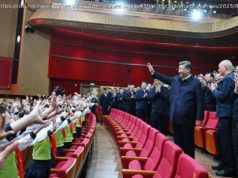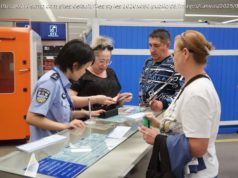Whether you’re visiting Beijing for business or leisure, the Chinese capital offers a rich tapestry of historical and modern attractions and culture.
Beijing Great Wall Mutianyu Amber Gibson
Whether you’re visiting Beijing for business or leisure, the Chinese capital offers a rich tapestry of historical and modern attractions and culture. On first impression, it can seem more impenetrable and not quite as warm and welcoming as cities further south, like Shanghai, but once you crack the shell, there are so many delicious, wondrous and beautiful places to discover.
STAY
Hyatt Regency Beijing Wangjing Club Terrace Hyatt Regency Beijing Wangjing
Beijing’s traffic and pollution can feel smothering at times, so escape to the just-opened Hyatt Regency Beijing Wangjing, the first international five-star hotel in the neighborhood and the rare city hotel with a resort vibe, designed to resemble an urban forest. Wangjing is a fairly new neighborhood in Beijing, former peppercorn fields rapidly built up over the past couple of decades and now home to many multinational companies with a robust expat community.
Hyatt Regency Beijing Wangjing Lobby Hyatt Regency Beijing Wangjing
Renowned Japanese architect Kengo Kuma was inspired by the hotel’s location between two large parks and embraced natural elements with a minimalist interior, placing ferns, trees and even a baby bamboo garden to welcome guests in the glass atrium lobby. The building is designed as a Sanhe Yuan, or three-sided courtyard style home surrounding a green garden. With 348 guest rooms including 29 suites, and ample meeting space, Hyatt Regency caters to a business traveler but is also a wonderful choice for leisure. Rooms and public spaces have a simple Japanese aesthetic, with wood, earth, water and light motifs and artwork. Beautiful tea sets in each room, although sadly no Toto toilets. The spa isn’t quite ready yet, but I’m told it will debut in January.
Rosewood Beijing Swimming Pool Rosewood Beijing
For ultra-luxury, Rosewood Beijing is the pinnacle, and more centrally located to shopping and historical sites in the Chaoyang District opposite the CCTV Tower.
Rosewood Beijing Premier Room Rosewood Beijing
Dark, woody tones create a sense of warmth throughout public spaces and guestrooms; the design is masculine but stylish. Rooms feel more like apartments than hotel rooms, and I imagine this could be George Clooney’s Beijing pied-à-terre, with unique objets d’art jauntily places on the shelves and lovely glassware for cocktails. Ink-brush paintings, delicate calligraphy and yin-yang mixed media pieces by Beijing-based artists, curated by Emily de Wolfe Petit of Peking Art Associates, reflect a modern interpretation of traditional Chinese themes.
Rosewood Beijing Manor Club Rosewood Beijing
The Manor Club is above and beyond what one might expect from an executive club level, an enormous space divided into several more intimate rooms with bountiful breakfast, afternoon tea and dinner service. Butler service is especially kind and thoughtful, with personalized details like embroidered pillowcases, which seems to be a Rosewood signature touch.
Rosewood Beijing Spa Entrance Rosewood Beijing
You’ll feel immediately relaxed as the elevator doors open to Sense Spa. Step across the candle-lit pool, change into a robe and prepare for a massage that will surely put you to sleep and release any knots. Afterwards it will be hard to muster the willpower to do anything productive.
EAT
The House of Dynasties Dim Sum Rosewood Beijing
Hotel restaurants in Beijing are in my experience excellent and no less authentic than independent establishments. Cang Yue at the Hyatt Regency and The House of Dynasties at Rosewood are paradigms of Chinese fine dining, serving dim sum lunches and authentic recipes inspired by various regions and time periods throughout Chinese history, including delicacies like fish maw, abalone and bird’s nest. For a more casual, convivial meal, gather around a hotpot at Red Bowl. First select a broth – Spicy Sichuan and the traditional light Beijing broth with ginger and leeks are both excellent choices – then choose from a long list of meats, seafood, vegetables and mushrooms to cook yourself and add any number of toppings, oils and sauces to dress up the flavor. Play it safe, or get more adventurous with your order, trying beef trachea, tendon or goose intestine if you dare.
Red Bowl Seafood Rosewood Beijing
For a Chinese tea experience that blends old and new, find Curvy Corridor Courtyard, a private art gallery converted into a modern teahouse and restaurant in 2015 in Beijing’s traditional hutong district. Experience the understated but precise Chinese tea ceremony and enjoy rare pu-erh tea with light desserts like airy cream cheese mousse studded with fresh lily bulb. There are just nine tables here and three private rooms. The space has won numerous international architecture awards for its unique design with curved glass walls and interior bamboo garden, embracing nature through design just like Hyatt Regency Beijing Wangjing.
Curvy Corridor Courtyard Amber Gibson
As you wander the streets, satisfy your sweet tooth with traditional Beijing pastries like Wandou Huang smooth split pea cake, Ai Wo glutinous rice balls (similar to mochi) and cakes filled with jujube paste, sesame, hawthorn and rose. If you’re up early one morning due to jetlag, take a walk and munch on fresh jianbing – an eggy crepe sandwich – from a street vendor. Or try an Old Beijing Yogurt from small ceramic jugs covered with blue and white paper. Poke a straw through the lid and slurp it up like a thick, sweet and tangy milkshake before returning the reusable container.
EXPLORE
Nanluoguxiang craft shop Amber Gibson
For a taste of Old Beijing, head towards the center of the city to Nanluoguxiang, a neighborhood of narrow alleys, or hutongs, built during the Yuan Dynasty. Now it’s a bustling tourist destination lined with boutiques, restaurants, bars and shops selling souvenirs, traditional handicrafts and regional snacks. In between, there are historic homes and temples, making for a vibrant juxtaposition of the ancient and contemporary.
Continue further towards the center of Beijing and you’ll reach The Forbidden City, where two dozen emperors ruled China over the course of 500 years, from the Ming Dynasty to the Qing Dynasty. Cross the wide moat and allow a full day to explore the 98 buildings that comprise the imperial palace complex, now home to the Palace Museum – the most visited museum in the country. From the outer court and reception halls to the emperor’s residence in the inner court, the layout offers rich insight into power, Chinese philosophy and the rituals of daily life.






